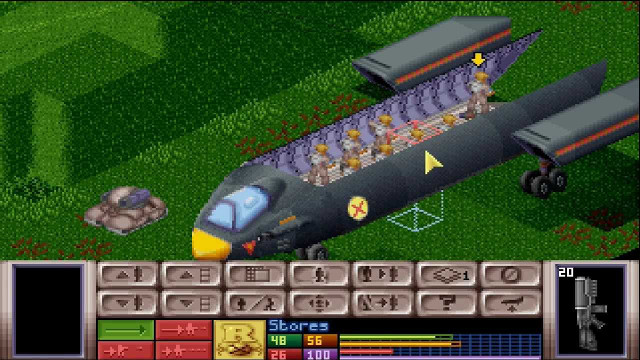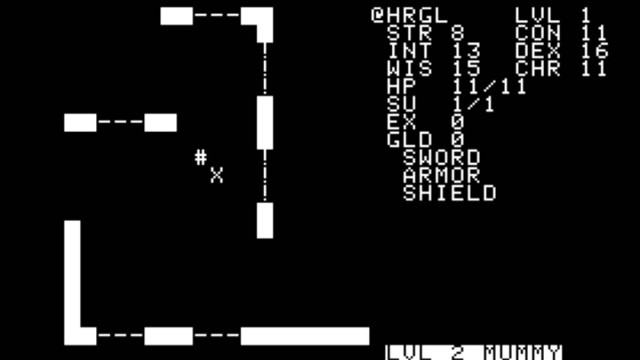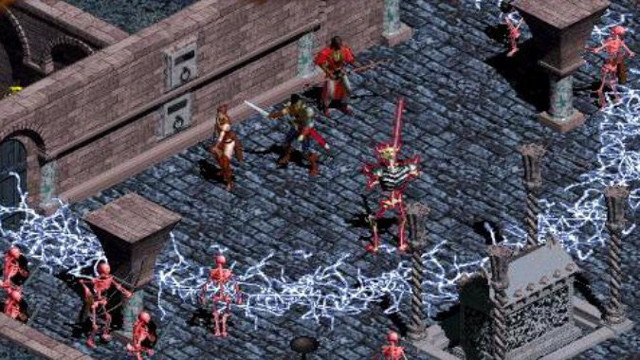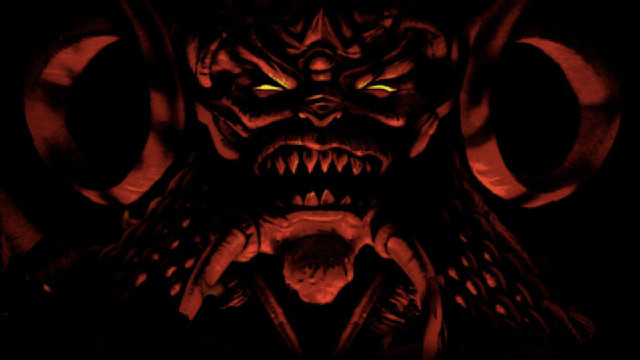Blizzard Entertainment's offices in Irvine display its prestige in a warm and modest manner, with a collection of clean and sophisticated buildings arranged on the north side of Alton Parkway. Passersbys are informed of the landmark by steel Blizzard Entertainment lettering emblazoned above the main entrance. Those who are fortunate enough to walk the campus can see one of the most immaculately crafted video game statues in the world showcasing a ferocious Orc riding a Direwolf.
Despite its remarkable success, Blizzard Entertainment wasn't always a large, financially secure company that could afford a billion dollar campus. In 1996 it only had a small number of products in its portfolio, most of which can't be named or remembered by the average gamer. But just two years prior it made Warcraft: Orcs & Humans, and for that it already had a sizable population of fans.
During this era RTS games were trending. Dune 2 and Command & Conquer were just two of the best-sellers of the decade, becoming commonly featured titles on store shelves. This and the notable debut of Warcraft was all the evidence Blizzard needed to continue pursuing the genre with sequels and even a sci-fi IP that would later be known as StarCraft.
When Condor (now known as Blizzard North) first made a move to conceptualize what is now known as Diablo, it was much different than what gamers would play two years later. Initially described by Diablo creator David Brevik as a "turn-based, single-player DOS game", it had more of a striking similarity to Warcraft than Blizzard would have been comfortable with. Its defining gameplay feature was action points, an in-game resource that would be spent to take action during turns. Along with its angels versus demons theme, this was expected to separate it from the competition.

Adjustments were made to its format over the coming months of 1995 as it approached the end of its early conception. By the time it was officially pitched to Blizzard it had RPG elements, and its gameplay mechanics were sold using a screenshot of X-COM, a game which bore great influence on Diablo.
As with other great games over the years, Diablo was shaped by a large number of influencers. Brevik commonly attributes the 1980's roguelikes NetHack and Rogue as inspiration. Early talks about expansion formatting was derived from Magic: The Gathering's booster packs, priced affordably at $5 each.
The two games that had the greatest impact on Diablo's design were Blizzard's very own Warcraft, and more importantly Valon Hill's Telengard. Described as a "dungeon exploration" game, its monsters, magic, and traps were an early precursor to what would soon become another prized IP of Blizzard.
It would take more than 18 months for Diablo to complete production. During that period of time Condor was acquired and renamed to Blizzard North, dozens of employees were pulled from StarCraft's development, and a number of difficult design decisions presented themselves. Most progress was made in the final months of development, during what was called a "crunch period" from August to December 1996. Long, arduous hours were common for employees during this time.
 Diablo's design was influenced by several titles, none more impactful than Telengard (1982).
Diablo's design was influenced by several titles, none more impactful than Telengard (1982).Diablo's potential was recognized early on by Brevik and Blizzard, although the full extent was unknown in a way very similar to World of Warcraft. Built on commercial software Diablo's assets were hand-made using a laborious process. It was also fashioned with multiplayer capability, something it inherited from Warcraft: Orcs & Humans.
For as simple as it may appear, Diablo was an ambitious pioneer of its time. Its gameplay style, involving a single controlled character who had access to a large number of items and abilities, was a technical nightmare. For fans of the game this complexity would manifest itself as frustrating game imbalance and exploitative game systems. But it was considered so fun and addictive that these issues were commonly overlooked.
Many elements of the original design document were cut during development, including a large number of class and race combinations, as well as a surprising number of magical abilities. There were even two cutscenes that you could find on the printed disc that were never played within the game.
Despite the challenges of development, Diablo experienced monumental success. Launched on December 31st, 1996, it was commended for providing a new perspective on strategy game design. Many reviewers found its systems facilitated great replay value, and its dark themes fit right in with the other greats of 1996 (Duke Nukem 3D, Quake, Resident Evil, and Enemy Zero). It would earn a number of game of the year awards as a result.

By 2001 Diablo had sold over 2.5 million units, an astonishing figure at the time. Shortly before this achievement, a sequel was launched under the name Diablo 2. The June 29th, 2000 release would similarly battle for game of the year awards, although unlike its predecessor would receive an expansion pack under the name Lord of Destruction in 2001. Blizzard was well on its way to tapping into the full potential of the franchise.
The Diablo series would hibernate for more than a decade following its early success. Much of this is owed to the surprising popularity of World of Warcraft, in addition to strategy games downtrending away from the spotlight. Nonetheless, a third installment would release in 2012 simply named Diablo 3. While it was considered abrasive by many fans of the franchise due to its auction house and casual-player friendly systems, it would become one of the best-selling PC games of all-time with over 20 million units sold.
We're now 20 years out from the birth of Diablo, and since then it has made a recognizable impact on the industry. Commonly referred to as one of the greatest games ever made, every hack and slash game that comes around takes influence from it in some way, and is better for it. Rumors indicate that a fourth game is in development, although it's unclear how far it is into development. In the meantime, Blizzard is celebrating the occasion with free events and items across its portfolio, including The Darkening of Tristram which is built to emulate the classic release within Diablo 3.
Happy 20th Anniversary to Diablo.











